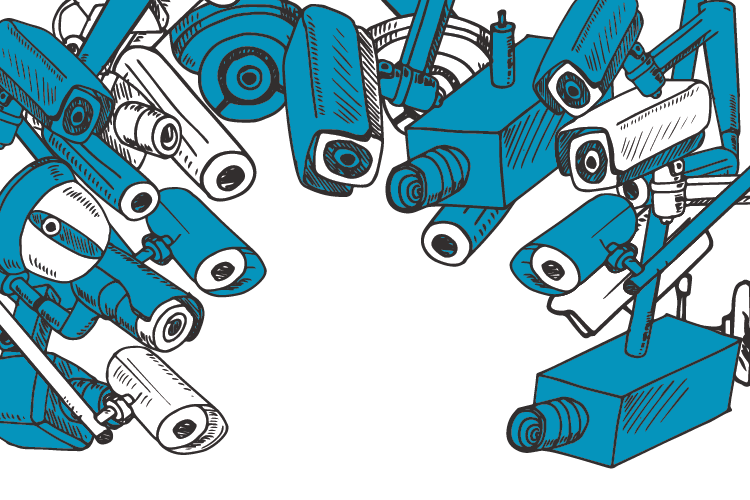Summary
-
Fifty-nine percent of US workers are burnt out in their current job. – More
-
Workplace stress was at a record high in the past year. – More
-
More than half of the workforce cannot find a work-life balance. – More
-
Employees with the least financial security are most likely to be burnt out. – More
-
Employees aren’t using well-being perks and benefits. – More
-
Hourly and shift-based industries are more prone to employee burnout. – More
Employee burnout is by no means a new concept. It was first introduced in 1974 by psychologist Herbert Freudenberger. He described it as an “onslaught” that staff members experience as a result of “excessive demands” on their energy, strength, and resources, rendering a person “inoperative.”
Decades have passed since then, and our personal and professional lives have become more fast-paced, increasing the risk of burnout and work-related stress. In 2019, the World Health Organization (WHO) listed burnout as a syndrome and an occupational phenomenon in the International Classification of Diseases (ICD-11).
The WHO says burnout is caused by “chronic workplace stress that has not been successfully managed.” It is said to have three dimensions:
- “feelings of energy depletion or exhaustion;
- increased mental distance from one’s job, or feelings of negativism or cynicism related to one’s job; and
- reduced professional efficacy.”
Less than a year after burnout was recognized by the WHO, the COVID-19 pandemic caused people to lose their jobs and frontline workers to fear for their safety, and many people’s homes doubled as their workplaces. This sent job burnout levels through the roof.
Workplace burnout is a symptom that negatively affects employee well-being, wreaking havoc on the work environment as well as employee output. Here’s a look at some of the latest burnout statistics to help you better understand and tackle it.
More than half of US workers experience burnout
The American Family Life Assurance Company of Columbus (Aflac) conducted a study between August and September 2022 and found that most US workers experience burnout. Thirty-six percent rated their level of burnout as moderate, 15% as high, and 8% as very high.
These levels of work burnout are significantly higher than those reported in 2021 (nine percentage points more) and are two percentage points higher than 2020 levels.
Workplace stress is at an all-time high
Stress is one of the main drivers behind burnout, so it is important to look at employee stress levels when trying to understand the prevalence of burnout.
The latest Gallup State of the Global Workplace report found that workers around the world were experiencing record-high levels of daily stress. Pre-COVID, 38% of respondents said that they experienced stress during much of the previous day. When COVID hit, that percentage rose to 43%, and it rose to 44% in 2021 — the highest Gallup has ever recorded.
Work-life balance is in jeopardy
A workplace culture and environment that provides workers with a sense of satisfaction and well-being helps people achieve a better work-life balance. Striking that balance means having the time and energy for family, personal relationships, and leisure, as well as employee engagement at the workplace.
Harvard Business Review found that 55% of employees have been unable to establish a work-life balance. They also found that personal relationships have been negatively affected, with workers not being able to maintain a strong connection with family (25%), colleagues (39%), or friends (50%).
According to psychologist Michael Leiter:
“These survey responses make it clear that a lot of people are having serious disruptions in their relationship with work […] It’s not surprising that people are more exhausted — people are working hard to keep their work and personal lives afloat.”
The most “financially fragile” are the most burnt out
Aflac’s study shows, perhaps unsurprisingly, that the groups with the most financial struggles are the ones that exhibit the most burnout symptoms — namely younger workers and Hispanic populations. US workers who reported “at least moderate levels” of burnout include:
- 71% of Gen Z
- 69% of Hispanics
- 65% of millennials
- 57% of Gen X
- 38% of baby boomers
They also found that more women reported feeling burnout (62%) than men (57%). The study also found that people who had more than one job were more likely to experience burnout than those with one job.
Webinar: How to Manage Burnout of Younger Employees
Burned-out employees are struggling with mental health issues
According to the WHO’s guidelines on mental health at work, the workplace can be either a protective or a disruptive force for employees’ mental health. Workplace stressors and burnout have been found to go hand in hand with a number of mental health challenges, according to research done by Aflac. The most prevalent issues are anxiety, depression, and trouble sleeping.
Webinar: How to Support the Mental Health of Hourly Staff
Job satisfaction, performance, and employee retention are negatively affected by burnout
Burnout also spells bad news for employers. It has been strongly linked with lower job satisfaction and job loyalty. It also affects workers’ opinions on whether or not their companies care for them. This effect can be seen when looking at the difference between employees who experience moderate, high, and low or no levels of burnout:
| Job satisfaction rate | “I believe my employer cares about my physical & mental health” | The likelihood of looking for another job | |
| High burnout | 55% | 47% | 56% |
| Moderate burnout | 57% | 51% | 29% |
| Low/no burnout | 80% | 67% | 18% |
All of this results in employees who are less productive at work. Nearly half (46%) of employees self-reported that their mental health situation has had a negative impact on their job performance. Similarly, just over half (51%) of employers interviewed said that the poor state of employee mental health has had an impact on the organization as a whole.
This negative effect on mental health is felt somewhat stronger by hybrid workers (52%) and remote workers (49%) when compared to their on-site (41%) co-workers.
Webinar: How to Stop Employee Turnover
Employee well-being programs aren’t utilized
In an attempt to safeguard employees’ physical and mental health, organizations are implementing different types of health and wellness perks and benefits for their employees. These include:
-
- Paid sick days for the benefit of their mental well-being, to tackle emotional exhaustion, or when feeling overwhelmed.
- Stipends for health and wellness expenses such as gym membership, therapy, healthcare costs, etc.
- Courses on stress management
- Flexible work hours to help employees better manage their work-life balance.
In one study, Deloitte found that 68% of workers surveyed are not using the well-being resources and perks that their organizations are offering them. This is because they find them “too time-consuming, confusing, or cumbersome.”
Shift-based industries have some of the highest burnout rates
One study surveyed employees from various industries to see which ones have the highest rates of burnout. The hotel, food services, and hospitality industry topped the list, with 80.3% of employees feeling burnt out by their workload.
The next highest are manufacturing (77.4%) and medical and healthcare (76.8%). Wholesale and retail ranked sixth highest at 75%.
One of the main causes of burnout? Your boss
Gallup found that the biggest contributors to employee burnout are “unfair treatment at work,” an unmanageable workload, unclear communication and support from management, and unreasonable time pressure.
These factors are something management can address to reduce their staff’s burnout.
Download our whitepaper on how to reduce burnout of hourly employees
We’re living through a burnout epidemic, and as employers and human resources professionals, you have an important role to play in helping your employees and your organization. In our whitepaper, How to Reduce Burnout of Hourly Employees, we dive a bit deeper into the causes and costs of burnout as well as how to reduce it.
Download the whitepaper here.











